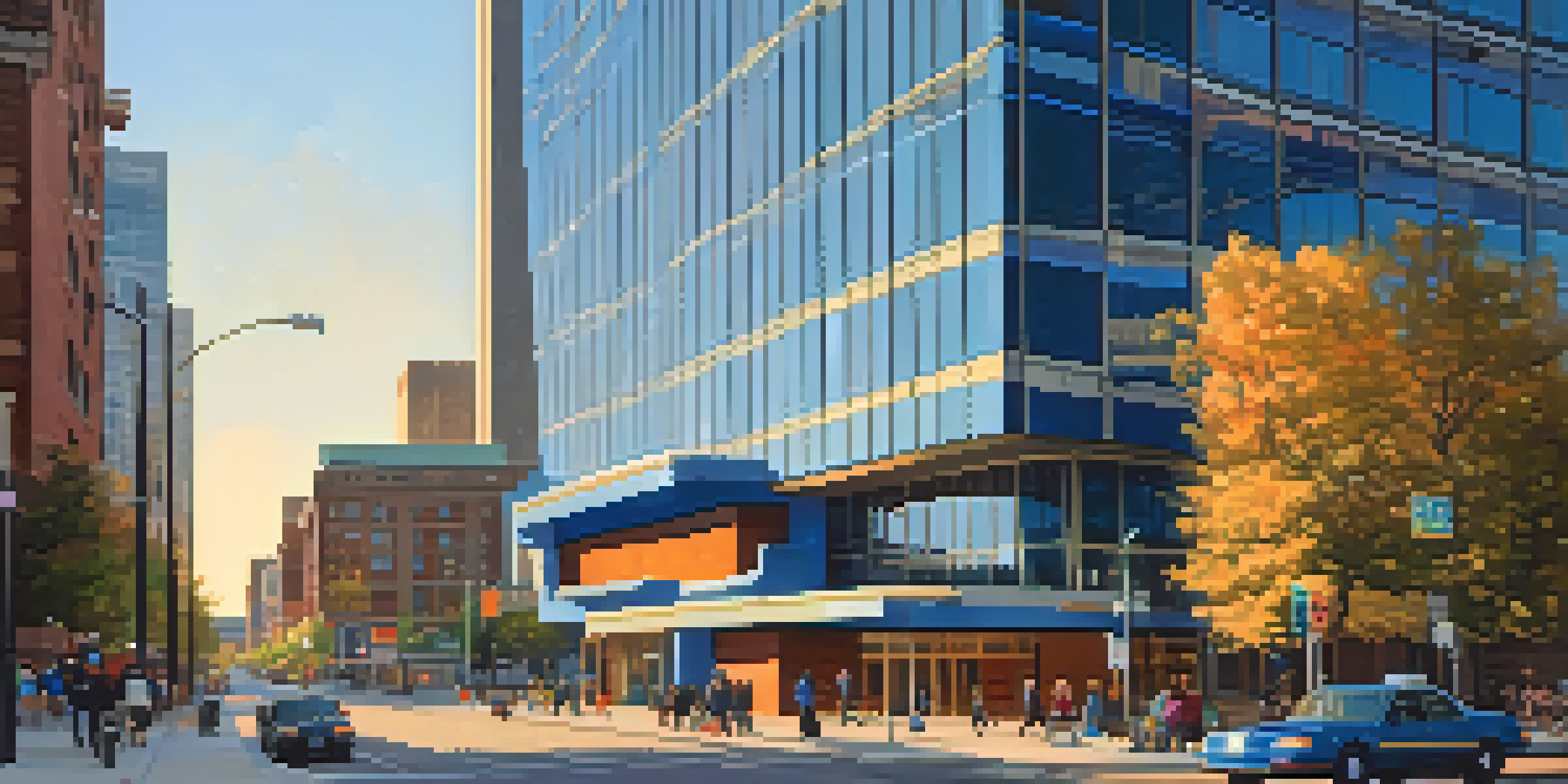Postmodernism in Minneapolis: A Shift in Architectural Style

Introduction to Postmodernism in Architecture
Postmodernism emerged as a reaction against the strict principles of modernism, emphasizing a more playful and eclectic approach to design. In architecture, this movement allowed for creativity and individual expression, breaking away from uniformity. Minneapolis, with its rich cultural tapestry, became a fertile ground for these innovative ideas to take root.
Historical Context of Minneapolis Architecture
To understand the impact of postmodernism, it's essential to look at the architectural landscape of Minneapolis before its emergence. The city was primarily shaped by modernist ideals, featuring clean lines and functional designs, such as the iconic IDS Center. However, by the late 20th century, architects began to seek new ways to infuse character and personality into their structures, paving the way for postmodern influences.
Postmodernism Redefines Minneapolis
The postmodern movement in architecture introduced creativity and eclectic design, moving away from the uniformity of modernism in Minneapolis.
Key Characteristics of Postmodern Architecture
Postmodern architecture is often characterized by its playful use of color, texture, and historical references. Buildings feature unexpected shapes and elements, merging different styles to create visually stimulating designs. In Minneapolis, this can be seen in structures like the Minneapolis Central Library, where the exterior combines modern materials with classical references.
Notable Postmodern Buildings in Minneapolis
Several buildings in Minneapolis stand as testaments to the postmodern movement, each telling a unique story through its design. The Guthrie Theater, with its striking blue cantilevered box, exemplifies how postmodernism can challenge traditional forms while enhancing functionality. Similarly, the Walker Art Center showcases an innovative blend of art and architecture, inviting visitors to explore its dynamic spaces.
Local Architects Shape the Scene
Influential architects like Frank Gehry and Jean Nouvel contributed to Minneapolis' architectural diversity, blending postmodern principles with local culture.
The Role of Local Architects in the Movement
Local architects played a crucial role in shaping the postmodern identity of Minneapolis. Visionaries like Frank Gehry and Jean Nouvel brought their distinct styles, contributing to the city's architectural diversity. Their works not only reflect postmodern principles but also resonate with the local community, creating spaces that are both functional and culturally significant.
Impact of Postmodernism on Urban Development
The infusion of postmodern design has significantly influenced urban development in Minneapolis. Planners and architects began to prioritize public spaces, integrating art and architecture to enhance the urban experience. This shift has resulted in vibrant neighborhoods where architecture is not just about buildings, but also about fostering community connections.
Urban Development Transformed
Postmodern architecture has significantly impacted urban planning in Minneapolis, emphasizing public spaces and community engagement.
Criticism and Challenges of Postmodern Architecture
Despite its many successes, postmodern architecture has faced criticism over the years. Detractors argue that some designs can appear superficial or lack coherence, prioritizing style over substance. In Minneapolis, this debate continues as the city balances the need for innovation with the preservation of its historical character.
The Future of Postmodernism in Minneapolis
Looking ahead, postmodernism remains a vital part of Minneapolis' architectural narrative. As new generations of architects emerge, they are likely to draw inspiration from postmodern ideals while incorporating contemporary sustainability practices. This evolution promises to keep the city's architectural landscape dynamic and engaging, reflecting both its history and future aspirations.